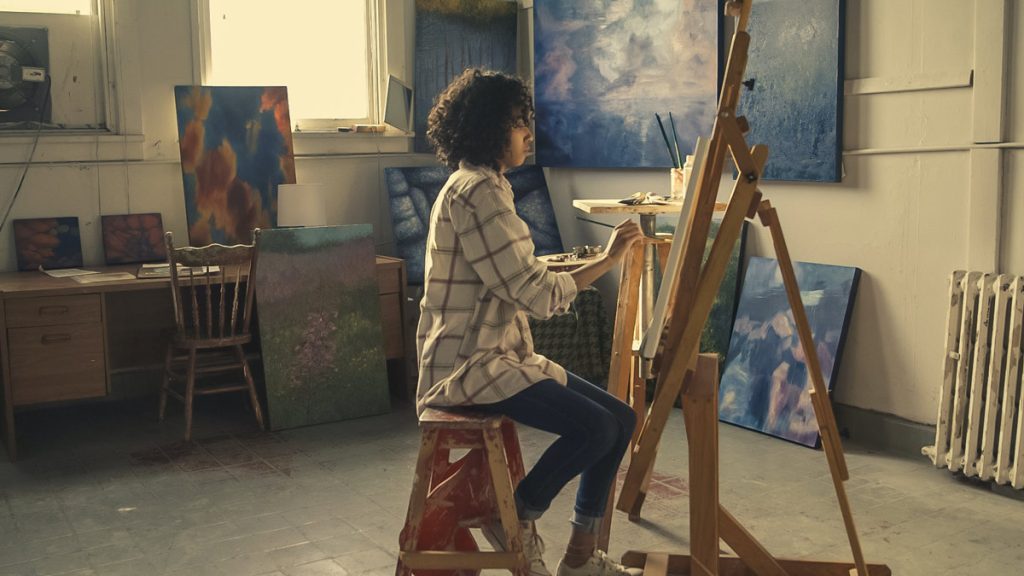Creative wellness is the practice of using creative arts, such as music, dance, or painting, to promote physical, emotional, and psychological good health. It is a form of self-care that involves appreciating beauty in oneself and the surrounding world and expressing oneself through participation in the arts.
Consider a creative pursuit that brings you joy. It could be a visual art, such as painting. Now, think of how it makes you feel. Some might describe it using words like tranquil, passionate, laid-back, or inspired. The power of art lies in its ability to bring different people together and unleash each one’s individuality. Making art is an effective means of self-care and mental health maintenance.
Studies have demonstrated that expressing oneself via art can benefit those with depression, anxiety, and overwhelming stress. Making art is associated with better memory, reasoning, and resilience in aging persons.
Art can have profound effects on people’s lives. It does not conform to established standards and is different for each individual. Creative wellness could improve your mental health in different ways and help you lead a healthier lifestyle.
How Making Art Helps Improve Mental Health and Creative Wellness
Boosts Self-Esteem
All people, young and old, can benefit from the increased confidence and fulfillment of creating art. When you finish a creative task, you often feel a rush of dopamine, which makes you feel good, gives you more drive, and helps you focus.
You don’t need to create a masterpiece to enjoy the benefits of creative wellness. This is true of any creative pursuit. For example, to reap the psychological benefits of creating replica paintings, you have to get your hands dirty, make something, and have fun doing it. This process stimulates the formation of new neural pathways in the brain, which generally enhances your sense of wellbeing, reduces depression, and even slows aging.
Healing
Healing from trauma is often very challenging. Fortunately, there are paths to recovery. Making art can facilitate the integration of painful experiences and healing by forging a link between the body and the mind.
Research reveals that the process of producing art, whether painstakingly painting a masterpiece or doodling aimlessly, can have profound therapeutic effects on the creator. For example, the stress hormone cortisol was reduced in 75% of participants (independent of their level of artistic experience) throughout a 45-minute art-making activity, as reported in the journal Art Therapy.
Stress Relief
Art therapy is not just for young people. Artistic pursuits such as carving, sketching, or drawing benefit mental health, reduce stress, and foster calmness at any age. Making art is a great way to de-stress and escape daily pressures. As you immerse yourself in your work, you forget about your problems. Art therapy helps treat post-traumatic stress disorder because of its benefits to the mind. Many people enjoy adult coloring books as a creative outlet and stress relief technique.
Keeps One Engaged
Humans get delight in attending cultural events such as music festivals, exhibitions, theater, and ballet. Participation in the arts is shown to have positive, long-term effects on health. It can prevent mental health problems or make them easier to manage and promote healing.
Participating in artistic activities can help one’s mental health in several ways:
- Artist-led health promotion initiatives in the arts can improve people’s health through exposure to and participation in the arts in daily life.
- Classical handicrafts, sculpture, graphic imaging, text, ballet, film, poetry, songs, gardens, and cuisine are some of the creative activities we can do to release stress.
Forget Pain through Art
Complications such as pain, depression, stress, and anxiety often accompany chronic health conditions. People suffering from chronic diseases can benefit from making art or viewing impressively crafted art.
Museum visits and art walks are enjoyable and inspiring for people of all ages. The health benefits of exposing yourself and your loved ones to the arts are numerous. These benefits can be experienced in various ways, such as learning something new, rediscovering a passion, or simply enjoying a pleasant escape. Make time to use your imagination and boost your creative wellness by taking a day off to enjoy your favorite art.
Make Memories with Art
Art therapy can improve cognitive function and memory in patients with Alzheimer’s disease and other forms of dementia. In addition, people with these diseases can benefit from engaging in artistic pursuits because it gives them something they enjoy doing, boosts their social connections, and encourages new brain cell formation.
Creates a Sense of Community
The arts benefit society as a whole. Loss of friends, family members, and the ability to work, among other things, can lead to feelings of isolation as we get older.
People in older life might renew friendships and expand social networks through participation in arts programs. Reaching out to friends and family can be a great way to combat feelings of isolation and loneliness. This is also true for assisted living facilities, where participation in artistic pursuits has boosted the morale and health of residents and staff.
Creative Thinking is Healthy
Art has the additional virtue of stimulating imaginative and original thought in both young and old. As a bonus, it improves your ability to solve problems. Creative people are more inclined to use their imaginations because there is no right answer in art. Learning a foreign language has a similar effect on the brain by stimulating and preparing it for complex functions, and this form of flexible thinking has the same result.
Conclusion
Countries around the world are experiencing enormous challenges in public health. In the United Kingdom, more than 20% of these problems can be attributed to mental health issues, higher than cancer and heart disease combined.
Innovative and effective therapies are desperately needed now more than ever as the number of people with long-term diseases rises alongside an aging population that may face high rates of physical inactivity and social alienation.
The arts play a significant part here by providing aid, fostering creative wellness, and facilitating social interaction. Additionally, you can develop the habit of making art even if you’re not going through hardships. It will be time well spent.
About the Author: Lianna Arakelyan is working on the Content and Marketing team at 1st art gallery, which is the largest and oldest online retailer for handmade Oil Painting Portraits & Reproductions of famous artists – old masters & contemporary. She contributes articles about paintings, famous artists, art movements, home improvement with the help of art, etc. You can find really professional insights in her writings.
Photo by Burst: https://www.pexels.com/photo/woman-sitting-on-brown-stool-374054/
The opinions and views expressed in any guest blog post do not necessarily reflect those of www.rtor.org or its sponsor, Laurel House, Inc. The author and www.rtor.org have no affiliations with any products or services mentioned in the article or linked to therein. Guest Authors may have affiliations to products mentioned or linked to in their author bios.
Recommended for You
- Why More People Are Prioritizing Mental Health Treatment - April 25, 2025
- Building a Strong Mental Health Foundation for Your Child - April 23, 2025
- How Supporting Others Can Improve Your Mental Health - April 21, 2025





